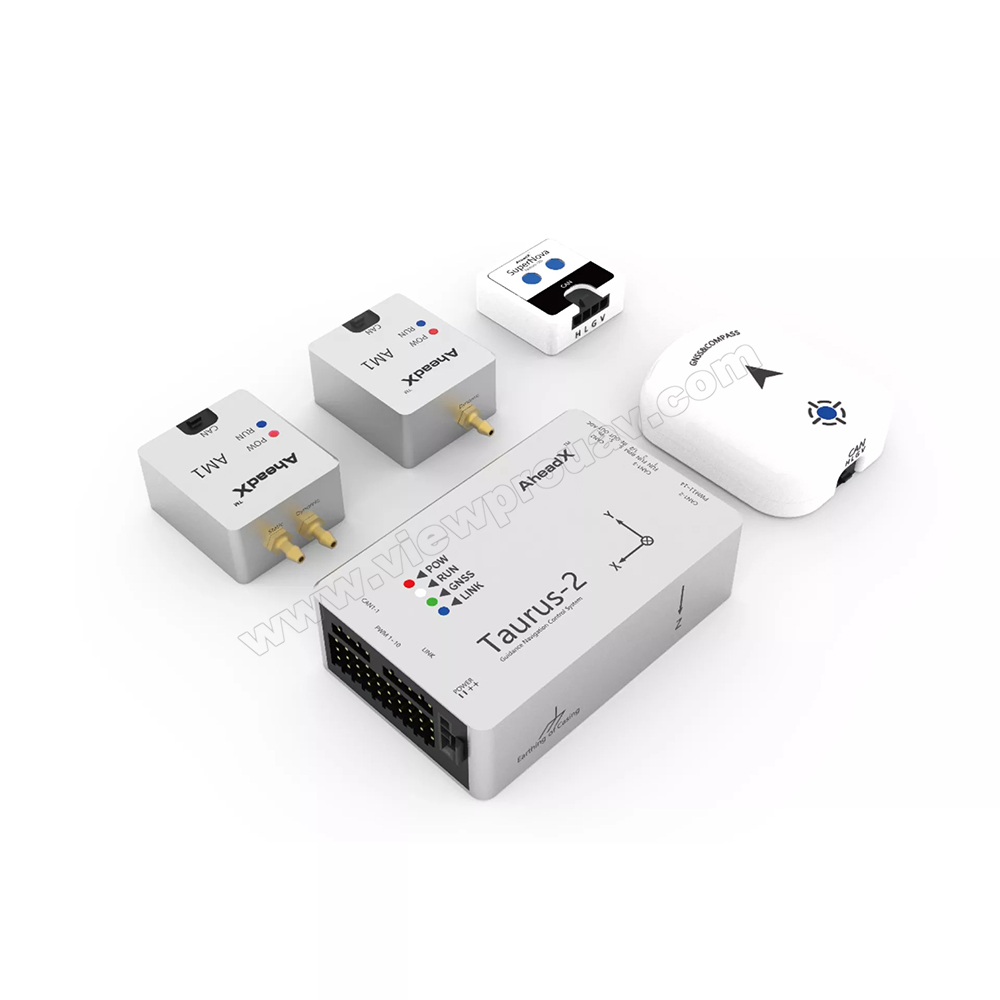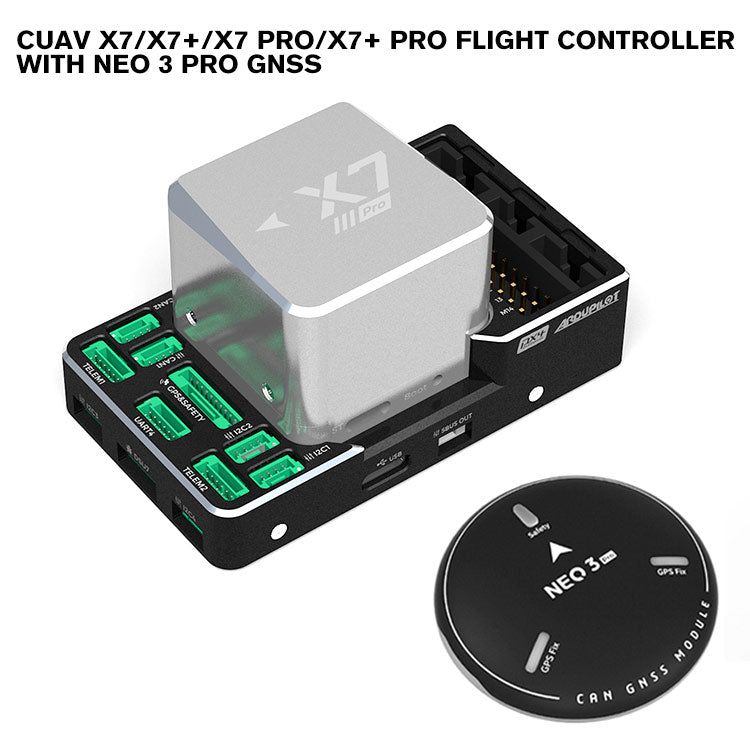SparkNavi Drone Flight Controller and GNSS/INS Made in Taiwan: Cutting-Edge Solutions for UAVs
SparkNavi Drone Flight Controller and GNSS/INS Made in Taiwan: Cutting-Edge Solutions for UAVs
Blog Article
Comprehending the Important Features and Features of a Drone Trip Controller for Optimal Airborne Performance
The flight controller acts as the crucial element in a drone's architecture, orchestrating its motions and making sure stability via an advanced interplay of information and sensing units handling. Understanding the important features and functions of these controllers is vital for maximizing airborne efficiency, as they determine not only navigational precision yet likewise overall safety and security and integrity. With advancements in innovation, the landscape of trip controllers is swiftly progressing, motivating a closer evaluation of what absolutely defines optimal performance in this vital system. What effects do these growths hold for both lovers and professionals in the area?
Overview of Flight Controllers
When checking out the globe of drone technology, recognizing trip controllers is vital for both specialists and enthusiasts alike. Trip controllers work as the brain of the drone, orchestrating its motions and guaranteeing stability during trip (SparkNavi drone flight controller and GNSS/INS made in taiwan). They refine data from various sensing units, consisting of accelerometers, measures, and gyroscopes, to maintain stability and react to pilot inputs effectively
The style of flight controllers can differ considerably, varying from basic variations designed for entry-level drones to advanced systems outfitted with sophisticated attributes for professional applications. The assimilation of GPS capabilities enables specific navigation and positioning, while programmable firmware permits users to tailor trip characteristics to suit their particular demands.
In addition, trip controllers are pivotal in helping with communication in between the drone and the remote, making it possible for real-time changes and telemetry data transmission. Understanding the different types of flight controllers, including multi-rotor, fixed-wing, and hybrid systems, is essential for choosing the suitable design for a provided application. Ultimately, an extensive understanding of trip controllers not only enhances the flying experience but also makes best use of the efficiency and safety and security of drone procedures.
Secret Functions of Flight Controllers
Flight controllers play a crucial duty in taking care of a drone's trip characteristics by carrying out a number of crucial functions that ensure stability and responsiveness. Among the key features is the stabilization of the drone's orientation and elevation. This is attained with the combination of various sensing units, consisting of gyroscopes, measures, and accelerometers, which constantly keep an eye on the drone's position and activity.
.png)
Another essential function is the handling of control inputs from the pilot or self-governing systems. The trip controller analyzes these inputs and adjusts the drone's motor speeds appropriately to attain the preferred flight path. This consists of handling roll, yaw, and pitch, which are crucial for maneuverability.
Additionally, flight controllers are equipped with fail-safe devices. These functions are made to react to critical circumstances, such as reduced battery levels or loss of signal, by launching predefined actions like going back to the launch factor or hovering in position.

Important Functions to Think About
When choosing a drone trip controller to make sure ideal efficiency and dependability,Many important functions should be taken into account. One crucial aspect is the controller's processing power, which establishes its capacity to take care of intricate trip formulas and real-time data processing. A higher handling capacity enhances responsiveness and security throughout trip.
One more essential feature is the number of sustained trip settings. A flexible flight controller ought to use numerous settings, including acro, elevation hold, and GPS-assisted modes, accommodating various pilot ability degrees and functional scenarios. Additionally, the existence of built-in security features, such as fail-safes and geofencing, can substantially enhance operational safety and security.
Compatibility with different communication procedures is additionally vital, as it makes sure smooth integration with various other tools and peripherals, such as remote controllers and telemetry systems. Additionally, the controller's firmware need to be user-friendly and frequently updated to integrate new features and optimizations.
Combination With Sensors and Systems
A flight controller's efficiency is greatly affected by its capability to integrate with various sensing units and systems. This integration is important as it enables the flight controller to receive real-time data required for effective trip useful content monitoring. Secret sensors include GPS, inertial measurement devices (IMUs), barometers, and magnetometers, each offering important info regarding the drone's orientation, position, and altitude.

Additionally, advanced trip controllers sustain assimilation with haul systems, consisting of cams and various other sensors, allowing improved capabilities such as self-governing navigating and challenge evasion. This interconnectedness not just improves the drone's operational capabilities but also broadens its application prospective across numerous industries, from airborne photography to farming monitoring. Thus, a well-integrated trip controller is essential for achieving optimum airborne efficiency and guaranteeing the integrity of drone operations.
Tips for Optimizing Efficiency
To optimize the performance of your drone, numerous vital approaches can be utilized that concentrate on optimizing both equipment and software program elements. Initially, ensure that the flight controller firmware is up to day. Makers often launch updates that boost security, boost performance, and fix insects. Frequently looking for these updates can substantially affect your drone's performance.
Next, calibrate your sensing units, including the accelerometer and gyroscope, to make sure precise analyses. Proper calibration reduces drift and improves flight security, especially throughout complex maneuvers. In addition, consider upgrading the equipment parts, such as propellers and motors, to boost drive and effectiveness. High-grade props can decrease drag and increase trip time.
Tweak your flight setups, consisting of PID (Proportional, Essential, Derivative) values, to attain responsive and smooth handling. By implementing these strategies, drone drivers can dramatically improve aerial performance, leading to a much more efficient and delightful flying experience.
Final Thought
Finally, a thorough understanding of drone flight controllers is necessary for boosting aerial performance. The assimilation of important functions and crucial features, including handling power and safety mechanisms, directly influences the stability and maneuverability of drones. Effective communication with numerous sensing units and systems plays a critical duty in attaining specific navigating and operational performance. By prioritizing these components, operators can considerably elevate the performance and integrity of their drone systems in varied applications.
Flight controllers offer as the mind try this web-site of the drone, managing its movements and making certain stability during trip.Flight controllers play a crucial role in handling a drone's trip characteristics by performing a number of vital features that guarantee stability and responsiveness. The trip controller analyzes these inputs and readjusts the drone's motor rates appropriately to achieve the preferred flight course.Various essential attributes ought to be taken right special info into account when selecting a drone flight controller to make sure ideal efficiency and dependability. Thus, a well-integrated trip controller is fundamental for accomplishing optimal airborne efficiency and making sure the dependability of drone operations.
Report this page